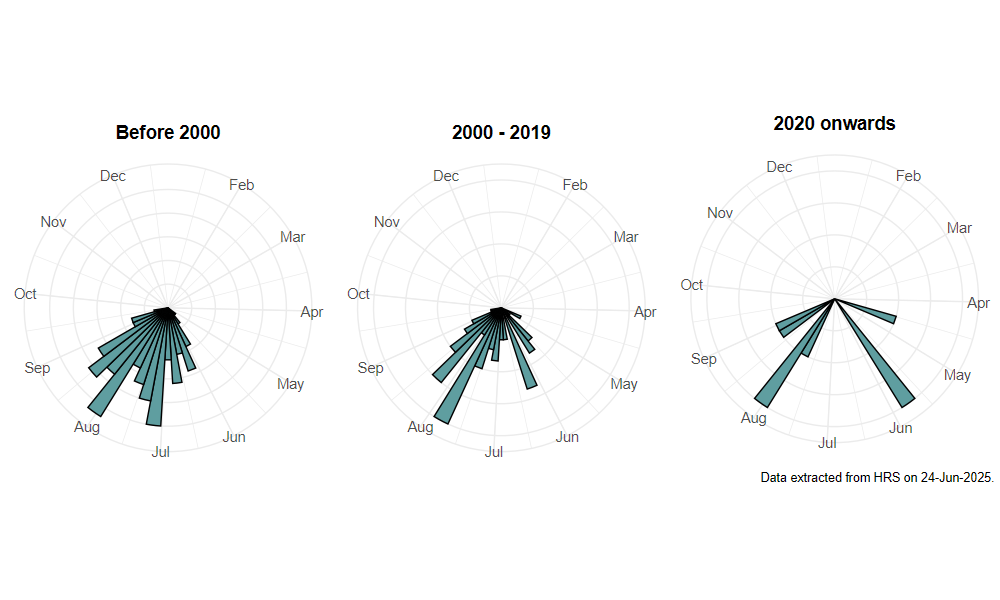Melanogaster aerosa (Loew, 1843)
Identification
Identification difficulty = 4. ![]()
![]() according to Ball & Morris, 20241
according to Ball & Morris, 20241
Synonymy
Chrysogaster macquarti Loew in Stubbs & Falk (1983)2.
Biology
The larva is aquatic living beneath the surface of semi-liquid, enriched mud near plant roots where there is no water movement. Typically it occurs in acid bogs and flushes and around small moorland streams, although they may also be associated with ditches on alluvial levels. Adults are usually swept, or found visiting flowers, close to water.
Flight period
The following plots show the number of unique records per week excluding those reported to be of immature stages.

Status
Listed as 'Notable' by Falk, 19913, and Rare (RDB3) by Shirt, 19874 but Ball & Morris, 20145 dropped it from this status and regard it as LOWER RISK.
Distribution
This species is regarded as a mainly northern and western species but the scatter of records from other areas suggests that this is not entirely so. It is widespread in acid areas but rarely abundant. Care is needed with identification, as this species is difficult to separate from M. hirtella, which often occurs in similar places. Whilst there is overlap in the flight periods, M. aerosa tends to fly later in the year.

Trends
The following plots show the Frescalo TFactor vs year and a map of the rescaled frequency (all records) for the species.
-
Ball, S., & Morris, R. (2024). Hoverflies of Britain and Ireland. WILDGuides (3rd ed.). Oxford: Princeton University Press. ↩
-
Stubbs, A., & Falk, S. (1983). British Hoverflies: An Illustrated Identification Guide (1st ed.). Reading: BENHS. ↩
-
Falk, S. (1991). A review of the scarce and threatened flies of Great Britain. ( No. 39). Research and Survey in Nature Conservation (pp. 1–194). Peterborough: NCC. ↩
-
Shirt, D. (Ed.). (1987). Red Data Books: 2. Insects. Peterborough: NCC. ↩
-
Ball, S., & Morris, R. (2014). A review of the scarce and threatened flies of Great Britain. Part 6: Syrphidae. ( No. 9). Species status (pp. 1–130). Peterborough: JNCC. ↩